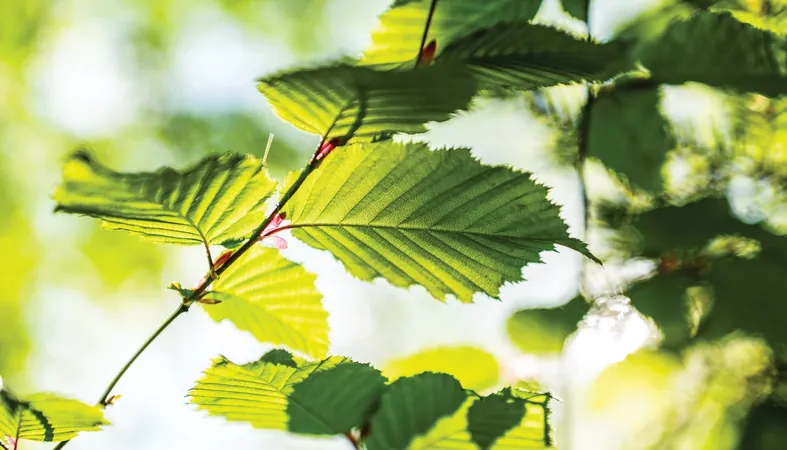
Revolutionizing Plastic Waste: Turn Trash into Treasure with Alanine!
2025-08-18
Author: Sarah
Transforming Waste into a Valuable Resource
Imagine being able to turn plastic waste, air, and water into an essential building block of life: the amino acid alanine! Thanks to groundbreaking research from an interdisciplinary team led by Bocheng Qiu at Nanjing Agricultural University, this dream is now a reality, with a hybrid catalytic system that can synthesize alanine directly from used bioplastics. This innovation not only promises to recycle waste plastic but also to create something valuable from these cheap materials without relying on harmful or costly chemicals.
The Alarming Demand for Alanine
Alanine, a simple yet crucial amino acid, is in high demand across various industries, including food, pharmaceuticals, and agriculture. Currently, most of the world's alanine supply is sourced through microbial fermentation, while conventional chemical methods use toxic cyanide and ammonia produced by energy-intensive processes, like the Haber-Bosch method.
Breaking Down Barriers with Innovation
Qiu and his team have achieved a remarkable feat by merging thermochemical, plasma, and electrochemical technologies to convert end-of-life polylactic acid (PLA) into alanine. Their process starts with a specially developed catalyst that depolymerizes PLA, generating lactic acid and then converting that into pyruvic acid.
Harnessing the Power of Plasma
Next, a plasma discharge device activates nitrogen in the air, creating nitrogen dioxide that dissolves in water to form nitric acid. By combining these two streams in an electrochemical reactor, the researchers use a copper-bismuth alloy to conduct a reductive process that ultimately yields alanine with an impressive 66% efficiency at a scale of 100 grams.
Environmental Impact and Challenges Ahead
The team's findings include a detailed analysis of each reaction step and the various catalysts used. They also conducted a lifecycle and techno-economic assessment, comparing their innovative method to traditional ammonia-based synthesis. While the new process shows promise in terms of profitability and reducing carbon emissions, experts like Eva Nichols from the University of British Columbia caution that scalability could be challenging due to the high energy demands of the plasma step and the production of toxic nitrogen dioxide.
A Glimpse into the Future of Amino Acid Manufacturing
Despite these hurdles, Nichols remains impressed with Qiu’s thorough and creative approach. She notes the critical importance of enantioselectivity in amino acid production—ensuring that the unique properties of alanine are preserved throughout the process. With a mix of excitement and skepticism, it’s clear that this innovative research could lead to exciting new ways to tackle plastic waste and meet global demands for amino acids in the future.
Conclusion: A Leap Towards Sustainability
This breakthrough in amino acid synthesis not only paves the way for more sustainable practices in chemical manufacturing but also highlights the need for continued exploration and innovation in recycling technologies. The combination of environmental mindfulness and scientific creativity indicates a promising direction for future research.



 Brasil (PT)
Brasil (PT)
 Canada (EN)
Canada (EN)
 Chile (ES)
Chile (ES)
 Česko (CS)
Česko (CS)
 대한민국 (KO)
대한민국 (KO)
 España (ES)
España (ES)
 France (FR)
France (FR)
 Hong Kong (EN)
Hong Kong (EN)
 Italia (IT)
Italia (IT)
 日本 (JA)
日本 (JA)
 Magyarország (HU)
Magyarország (HU)
 Norge (NO)
Norge (NO)
 Polska (PL)
Polska (PL)
 Schweiz (DE)
Schweiz (DE)
 Singapore (EN)
Singapore (EN)
 Sverige (SV)
Sverige (SV)
 Suomi (FI)
Suomi (FI)
 Türkiye (TR)
Türkiye (TR)
 الإمارات العربية المتحدة (AR)
الإمارات العربية المتحدة (AR)